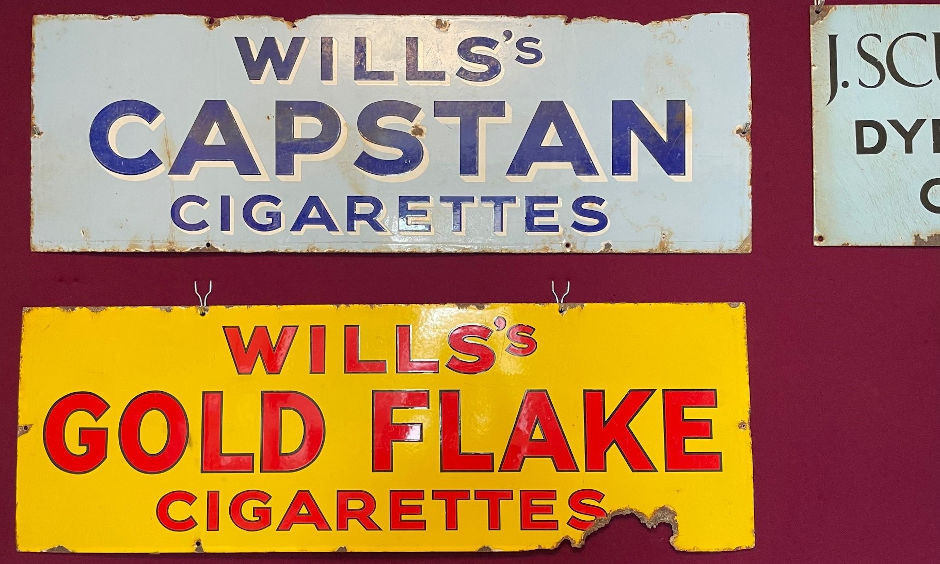
People who love the past but can’t hope to buy any of its fine silver or furniture, can find great pleasure in the everyday extraordinariness and familiarity of tin signs. As well as the nostalgia factor that vintage tin signs bring to a room, they evoke a sense of history and can blend effortlessly into both interior and exterior schemes.
Popular with the novice and the seasoned collector, tin signs come in all shapes and sizes and the types of vintage tin signs you can buy are varied. Some collectors may focus on a particular area of interest, such as train and railway signs while others may choose shop signs and yet others may prefer vintage tin advertising signs.
Tin advertising signs can be valuable, with certain iconic brands, manufacturers and tobacco companies commanding higher prices. In addition to brand, value is dependent on the following:
Rarity
The rarer a vintage tin sign, the higher its value is likely to be, particularly where there are very few known examples.
Demand
Demand for a certain tin sign can drive the price up but beware of items being over-priced simply because they are popular. Artificially inflated prices will put potential buyers off.
Design
Well-designed advertising signs and tin signs with strong colours usually have higher value than plainer examples. Shape also has a part to play with die-cut tin signs in unusual shapes and forms having a higher value.
Size
Large tin signs are difficult to transport and may present problems when being displayed and, likewise, small signs don’t look as impressive when displayed on a large expanse of wall. As a result, the value of both will be reduced and experts agree that the most valuable vintage tin signs range from 30” to 42” as they are easy to display and look imposing on a wall.
Condition
As with all areas of collectables, however, condition is key and it pays to look out for counterfeit tin signs and reproduction tin advertising signs, as some are so authentic-looking, a novice collector can easily be fooled.
Authentic, vintage tin signs were manufactured from steel, so an easy way to test to see if it is genuine is to use a magnet. Vintage tin signs dating back to the 1950s and earlier were not manufactured from aluminium and will therefore be magnetic. Later reproductions or fake signs will repel a magnet.
Beware of rust spots that appear orange-red in colour. Modern manufacturing techniques cannot replicate the original techniques used to produce genuine vintage tin signs, which age with a black-brown rust colour.
Rivets in vintage tin signs will look old and tarnished and may even show signs of rust so if any rivets look new, it may indicate that the whole piece is a reproduction.
Buying vintage tin signs from a reputable antique centre like Hemswell gives you access to our experienced and expert dealers who can reassure you about the authenticity of all their items, and you can be confident that the prices you pay will not be inflated. Choose to spend the entire day browsing our four buildings which are home to hundreds of dealers, or you could combine your trip with some sightseeing in nearby Lincoln. Our extensive range of advertising collectables can be viewed online with many more vintage tin signs in our centres.